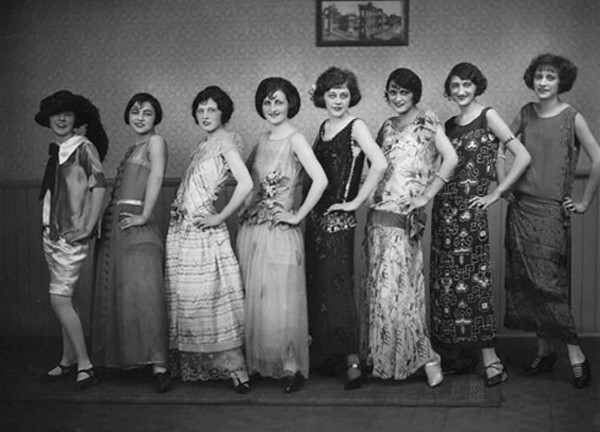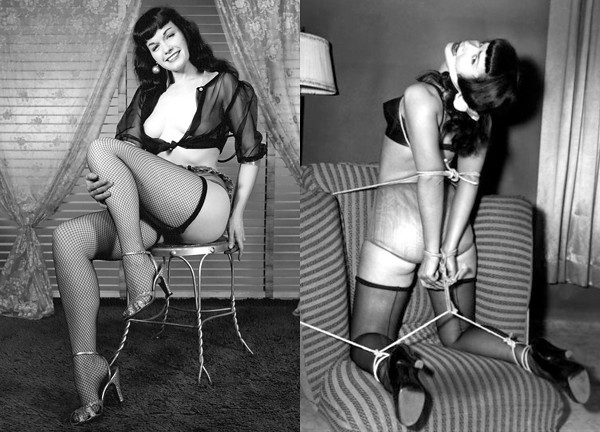It seems that these two separate groups of people will never agree but neither is perfectly right. Companies such as Ann Summers and Dove have launched campaigns to celebrate ‘real women’ even stating that ‘real women have curves’, the problem with this is that, sure, some women do naturally have curves but also some women are naturally size zeros. So what does Dove mean with their slogan; are they claiming that naturally slim women are in fact not women at all? There has to be a middle ground.

Talking at a panel hosted by the National Eating Disorder Awareness Organisation model Crystal Renn, who made her name as a plus size model, argued that industry standard samples should be changed from a US size zero to a US size eight, or UK size 12. Renn argued that this change would give designers more freedom to be creative and highlighted Zac Posen in particular as one designer who has already embraced a wide variety of sized models.
The last decade in particular has been dominated with unrealistic portrayals of body images but it hasn’t always been the case. Women’s bodies have been the subject of much furore since as far back as we could tell. We take a retrospective look at the changing shape of shape in fashion from the 1920s to today.
Throughout history right up until the 1920s women’s figures were depicted as voluptuous with plump limbs that was thought to represent fertility and motherhood, both desirable qualities in women. Women wore corsets which were designed to enhance their femininity and hourglass figures but as the War approached more than just the landscape changed; women were put to work doing physically demanding work and poverty resulted in a shortage of food which led to a change in womens bodies. Slim boyish figures became more fashionable and the flapper style became in vogue; slim and slight with clothes that hung strait down rather than figure hugging.

It wasn’t until the 1950s that a more curvaceous shape came to be more popular again, with women such as Betty Page and Marilyn Monroe taking centre stage on television and film, the ‘pin up’ shape quickly became the rage with large busts and tiny waists. It was due to the Second World War that this hyper feminine, sexualised image of women became so popular with images of Pin-up girls being sent to the US troops as symbols of patriotism and good luck.

Into the 1960s women’s shape seemed to revert to post war years infatuation with the waif like figures, women like Marianne Faithful and Twiggy bought back the boyish figure back into the forefront of fashion. The 1980s saw a rise in popularity of aerobics and fitness videos, Lycra was the material du jour and bodies became more toned and athletic looking, a generally healthier vision of the female body. However into the 90s the ‘heroin chic’ look took centre stage and an unhealthily slim frame became the desired body type. Since the 90s a less than svelte frame has more or less remained the fashionable weight since.

Ironically in times of poverty to be overweight suggested wealth and status as it implied that you had the money to eat well and likewise being slim inferred you were poor. In today’s society there has been a complete reverse in this as the rich can afford to hire personal trainers and cosmetic surgery to keep them looking slim whereas cheap food tends to be bad for you meaning that obesity is linked to the poorer classes.
But regardless of what you think women should look like is it really the fashion industries responsibility to look after us and protect us from eating disorders and body dismorphia? Why is it that society puts so much pressure on the fashion industry, more than any other, to be held accountable for what they do and how much responsibility should the industry actually take?
Of course staring at excessively skinny models in stunning dresses all day is going to make you less inclined to eat a big slice of cake for lunch but just don’t look at fashion magazines all day. Back in May 2012 Vogue launched a Health Initiative that included 19 international Vogue editors who all made a promise to encourage a healthier approach to body image. Alexandra Shuleman, editor of British Vogue, stated that ‘as one of the fashion industries most powerful voices, Vogue has the unique opportunity to engage with relevant issues where we feel we can make a difference.’
So whatever your body type and whatever you wish your body was like don’t feel like you’re the only one, body image has always been an issue within society and will probably remain so for a long while to come.
What do you think about the fashion industry and bodyweight? This blog post was written by Lucinda Bounsall who works at farfetch.com

Hi, just wanted to say that I really enjoyed this post. I began writing a blog not too long ago and most recently was also inspired to write about the size-issue, as well as felt the need to criticize Dove"s campaign for similar reasons to those you mentioned. Please check it out if you get the chance!
ReplyDeletehttp://alterabomination.blogspot.com/2014/05/on-real-beauty-and-social-media-lady.html
Well then, it what you think about yourself, not what the world thinks that matters.
ReplyDeleteJust like we see here, every few years, perceptions of fitness and shape change, so don't follow the flow. Be fit, but be you